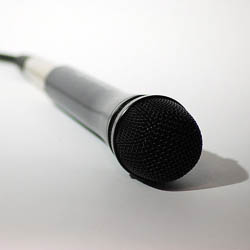Nothing has more effect on the sound of your recordings than microphone technique.
For example, which mic you choose—and where you place it—affect the recorded tone quality.
That is, mic technique affects how much bass, midrange, and treble you hear in the monitored sound of a musical instrument.
Mic choice and placement also affect how distant the instrument sounds in the recording, and how much background noise you pick up.
This guide suggests some popular ways to place mics to record musical instruments. These are just starting points to get you in the ballpark. They work well in many cases, but if you don’t like the results, feel free to change the microphone or its placement.
Other engineers have different opinions on mic techniques—there are no rules. If a mic and its placement sound good to you, that’s reason enough to use them.
What if you place a mic as described below, but you still hear too much room reverb or leakage? Place the mic closer than recommended below, and roll off the bass if necessary at your mixer to obtain a natural timbre.
Many of the techniques suggested here apply when the instrument or voice is recorded alone, as for an overdub.
This guide mentions several types of microphones:
FLAT CONDENSER MIC: A condenser mic with a basically flat frequency response. The mic has either an omni-directional pickup pattern or uni-directional pattern (such as cardioid). If you don’t own a flat condenser mic, use whatever you have.
FLAT DYNAMIC MIC: A dynamic mic with a basically flat response, either a supercardioid moving-coil mic or a bidirectional ribbon mic.
CARDIOID DYNAMIC MIC WITH A PRESENCE PEAK: A dynamic mic with a cardioid pickup pattern, and a rise in its response around 5 kHz, which adds definition or “presence.”
MINI MIC: A miniature condenser mic with an omni pickup pattern. There are uni-directional mini mics, but this guide refers just to omnis.
BOUNDARY MIC: A mini condenser mic—omni or uni-directional—that is mounted flush with, or very near, a flat plate. Such a mic is intended to be used on a surface.
With this background, let’s look at some typical studio miking methods for vocals and instruments.





















